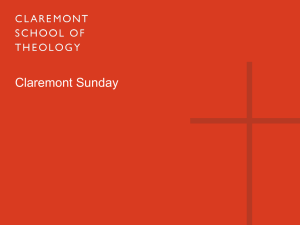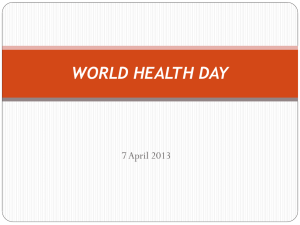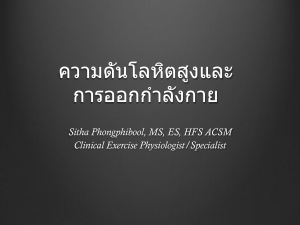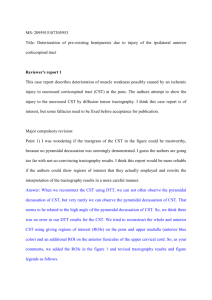Mr Yan Zhang
advertisement
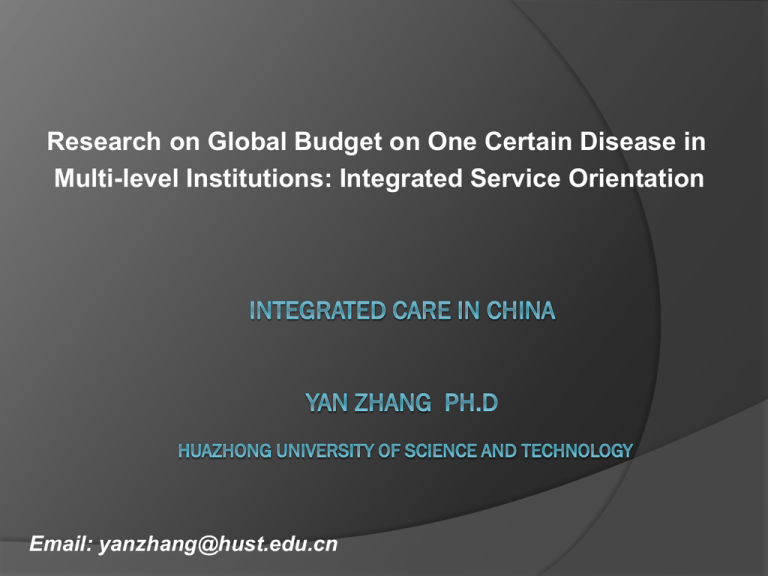
Research on Global Budget on One Certain Disease in Multi-level Institutions: Integrated Service Orientation Email: yanzhang@hust.edu.cn Background Objective Intervention Investigation Finds Background Disorder flow Lack of coordination Fragmented Healthcare Delivery System Efficiency and Effectiveness Health Reform Quality Access Utilization of healthcare increasing Efficiency Integrated health care system: International perspective and China practice Sep 1-3, 2012, Beijing “Study on the Efficiency and Effectiveness of the Integrated Health Care Services in Rural China” supported by the China Medical Board; “Research on the vertical Integration management model of Chinese rural medical service based on complex adaptive system theory” supported by the National Natural Science Fund. Objective Overall goals: Seamless care Improved care Better health Lower cost Objective: To explore the mechanism of Global Budget of Multi-level Institutions on one certain disease (GBMI) to stimulate health personnel to supply integrated care in primary institutions. Intervention Design Case-control study Qianjiang District, Chongqing, China 4 similar township hospitals were divided into intervention group and control group. All residents with hypertension, 4176 1st July 2012 --- 31st December 2013 Integrated Service on Hypertension Focus Continuous Service Team (CST) Member Service Commands Rewards Personalized follow-up and Monitoring Follow-up Monitoring Education … Continuous Service Path CPP CCP CMP Global Budget of Multi-level Instituions 3 institutions Calculation Adjustment Allocation Punishments Continuous Service Team (CST) Member: Village health personnel; General practitioners, public health personnel in township hospital; Hypertension specialists in county hospital; Coordinator et al. Service: Supplied all managed hypertension patients with all preventive and medical care Healthcare includes blood pressure monitoring, health education, medical care and doctor visit. Personalized Follow-up and Monitoring Salt group Obese group Routine Follow-up Risk Factors Assessment Alcohol and tobacco group Personalized Follow-up Anxiety group Motion group Risk Factors Criteria Different service forms Elderly group Difficult group Drug group Different service contents Medical treatment Doctor Visit Continuous Service Path, CSP Continuous Primary-care Pathway,CPP Continuous Clinical-care Pathway,CCP Continuous-care Management Pathway, CMP CST supplied above 10000 personalized health intervention services to 4167 managed patients by December 2012. County Hospital Cardiology Endocrinology Continuous Clinicalcare Pathway Township Hospital GP Coordinator Pub. Hea. Per Continuous Primarycare Pathway Village Clinic Village Doc 1 Village Doc 2 Village Doc 3 Continuous Clinical-care Pathway,CCP Insurance Payment Access Standards Enter Form CCP Continuous Diagnosis Continuous Treatment Continuous Medication Variation Analysis Out Global Budget of Multi-level Instituions Calculation Though the actual costs of all residents with hypertension in the past three years Adjustment By CPI, growth coefficient and inflation factor Allocation Possible budget balance belong to CST while budget shortfalls would be apportioned into CST Punishment Discount the possible budget balance for rejecting essential services and translating hypertension into other diseases Investigation 2 investigations on 1st July and 31st December 2012; Multistage stratified random sampling,593:578; The status of health self-assessment, experiences of seeing doctors, doctor visits and individual information. The data of expenditure on all managed patients were exported via Health Insurance Information Management System; The medical records were collected in medical institutions regularly. Results1 Management rate of hypertension increased from 58.1% to 93.5% (P<0.01) in intervention group; Standardized management rate from 37.1% to 42.3% (P<0.01) in intervention group; Medication adherence rate increased by 8.7% in intervention group; The ratio of expenditure on township hospitals to global expenditure increased from 21.3% to 25.4% (P=0.023), which were all higher than those of control group. Results2 Standard control ratio of hypertension is likely to reach 65% by Dec 2013 by means of Markov Prediction Model with continuous intervention; 38 patients have received continuous clinical services from CST while the average expenditure is 7% lower than that without CST; Growth rate of hospitalized hypertension patient in county hospital decreased from 15% to 12% while that in township hospital decreased by 6.3% in intervention group. Finds The expansion of patients with hypertension could be controlled and the behavior could be changed. The CST under GBMI can supply integrated care under the existing global budget. Although the effect was not significant, a longer intervention period may make it better. The cooperative mechanism established by CST and GBMI between county and village can play positive role in encouraging the health personnel to change service concepts, strengthening multi-level collaboration and improving effectiveness of service, thus it is in favor of continuity of medical and preventive services.


